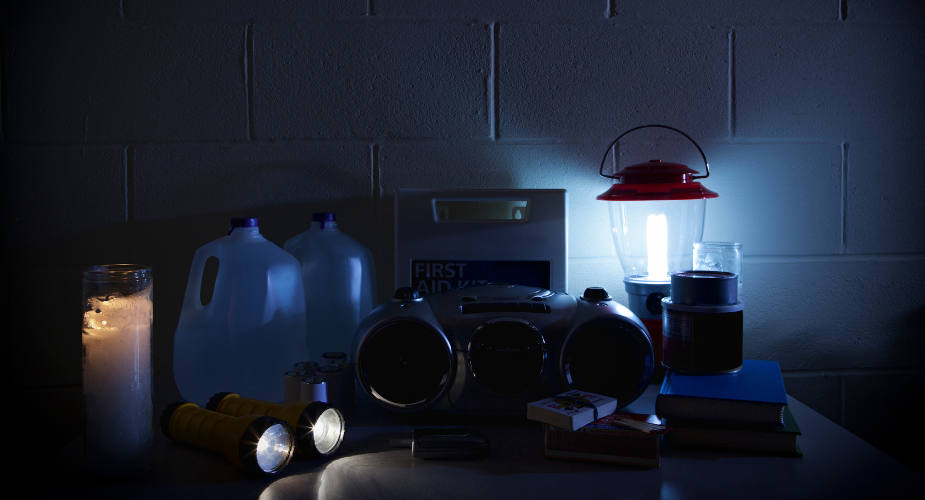Power outages although inconvenient, we could not avoid them. In such situations, timely information and swift resolution are critical to minimizing the impact on communities. This is where real-time outage tracking tools play a vital role. Thus empowering both utility providers and consumers to monitor, respond to, and resolve outages efficiently. Enter the CenterPoint Outage Map. It is designed to provide up-to-date information on power outages across service areas. In this article, we'll explore how it works and some tips to stay prepared during power outages.
Centerpoint Energy Outage Tracker
- What Is the CenterPoint Outage Map?
- How to Use the CenterPoint Energy Outage Tracker
- How to Stay Prepared for Power Outages
What Is the CenterPoint Outage Map?
The CenterPoint Outage Map is a dynamic, interactive tool designed to provide customers with real-time information about power outages in their area. Also, the map offers a visual representation of outage locations. Thus making it easy for users to understand the scope and scale of disruptions. Furthermore, it uses advanced data analytics and GPS technology to pinpoint affected areas.
How to Use the CenterPoint Energy Outage Tracker

The CenterPoint Energy Outage Tracker is a straightforward and efficient tool that empowers customers to stay informed and take action during power outages. Whether you're checking the status of an outage or reporting a new one, the tracker is designed to be user-friendly and accessible. Here's a step-by-step guide to using it effectively:
Step 1: Access the Outage Tracker
To begin, visit the CenterPoint Energy website or open the mobile app. Look for the "Outage Tracker" or "Outage Map" option, typically found on the homepage or under the "Customer Service" section. Click or tap to launch the tracker.
Step 2: Navigate Outage Details by ZIP Code
Once the tracker is open, you'll see an interactive map displaying outage locations. To find specific information about your area, enter your ZIP code in the search bar. The map will zoom in to show your neighborhood, with color-coded markers indicating the status of outages nearby. You can click on individual markers to view details such as the number of affected customers, the cause of the outage (if known), and the estimated restoration time.
Step 3: Report an Outage
If you're experiencing a power outage that isn't already reflected on the map, you can easily report it using the tracker. Look for the "Report Outage" button, usually located near the search bar. Clicking this will prompt you to enter your account information or address to verify your location. Once submitted, your outage will be logged, and the information will be shared with CenterPoint Energy's response teams.
How to Stay Prepared for Power Outages
While the CenterPoint outage tracker helps you stay informed, having a solid plan in place can make all the difference. Here are some essential steps to ensure you're prepared when the lights go out.
1. Invest in Backup Power Options
Having a backup power source can keep essential appliances running during an outage:
-
Portable Generators – Ideal for keeping refrigerators, lights, and medical equipment operational. Ensure proper ventilation when using gas-powered models.
-
Portable Power Stations – A cleaner, quieter alternative to traditional generators, perfect for charging devices and running small electronics.
-
Uninterruptible Power Supply (UPS) – Provides temporary power to keep computers and critical devices running during short outages.
One good example of a good backup power source is the Nature's Generator. It offers an eco-friendly alternative to traditional gas-powered generators, focusing on solar and wind-powered backup solutions. One of its key strengths is its sustainable energy approach. Unlike fuel-based generators, their systems rely on renewable energy sources. Thus making them ideal for long-term power outages, emergency preparedness, and off-grid living. With features like expandable battery capacity, solar panel compatibility, and wind turbine options, users can customize their setup to meet different energy needs.
Pros:
✔ Eco-friendly and renewable energy-powered
✔ Scalable battery storage for extended backup
✔ No fumes, noise, or reliance on fuel
✔ Suitable for home backup, camping, and off-grid living
Cons:
✖ Initial investment may be higher compared to traditional generators
2. Assemble an Emergency Kit
A well-stocked emergency kit can help you stay safe and comfortable during an outage. Be sure to include:
-
Flashlights and extra batteries.
-
Battery-powered or hand-crank radio for news updates.
-
Non-perishable food and bottled water (at least a three-day supply).
-
First-aid kit and necessary medications.
-
Warm blankets and extra clothing in case of cold weather.
-
Power banks for charging mobile devices.
3. Stay Updated Through Official Sources
Keeping up with the latest outage information ensures you can plan accordingly. Here's how:
-
Use the CenterPoint Outage Map & Tracker – Check real-time updates on power outages and estimated restoration times.
-
Sign Up for Alerts – Many energy providers, including CenterPoint, offer text or email notifications about outages in your area.
-
Follow Local News & Weather Reports – Severe weather can cause widespread outages, so staying informed helps with early preparation.
-
Download Emergency Apps – Apps like the FEMA app or weather alert apps provide critical information during power disruptions.
Conclusion
Staying informed and prepared can make a significant difference in how you handle power interruptions. Luckily, you now know how to use the CenterPoint Outage Map. Meanwhile, beyond tracking outages, having a backup power source and assembling an emergency kit ensures you stay safe and comfortable during unexpected blackouts. Additionally, signing up for alerts and following official sources keeps you updated with the latest outage information.






 10,000W LIFEPO4
10,000W LIFEPO4









